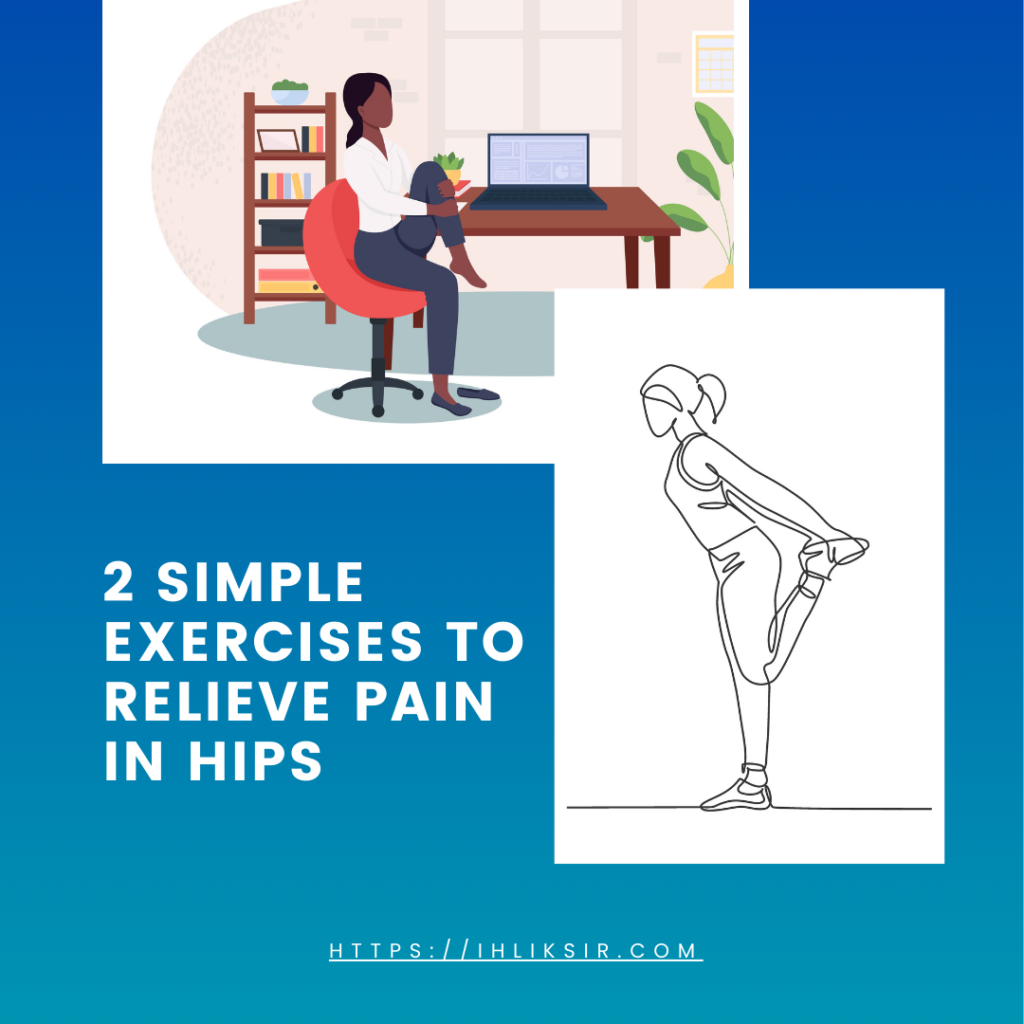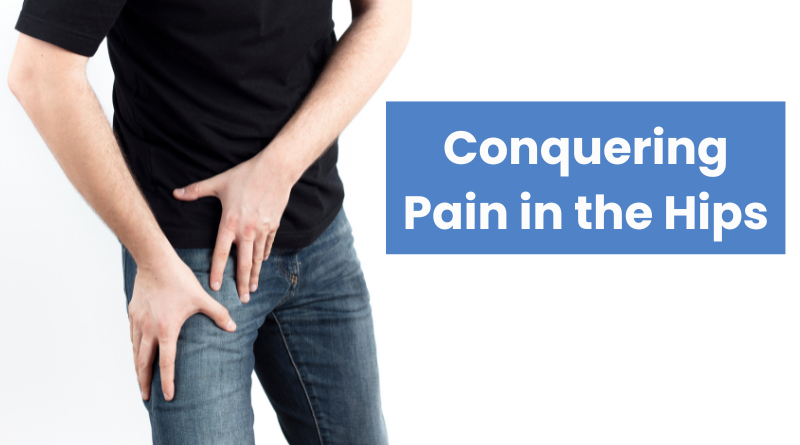Have you ever wondered why after a long day sat at your desk, your hips feel as sore as if you’d run a marathon? You’re not alone in this – it’s a common issue where pain in the hips stems from being seated for extended periods.
First off, the hip flexors are a group of muscles near the top of your thighs that allow you to bend at the waist and lift your knees. These muscles are crucial for daily movement, which is why it’s essential to keep them happy and healthy.
When we sit for extended periods, these muscles become shortened and tight, restricting their natural range of motion. This tightness can lead to pain, stiffness, and difficulty performing everyday activities like climbing stairs or getting out of a low chair.
Pain in this area can range from a mild annoyance to a sharp, debilitating sensation. It often manifests as an ache when you stand up after sitting, or as a pain that persists during activities like walking or running.
This isn’t just a matter of muscle soreness; it’s about the effects of sedentary behavior on our body’s mechanics. When you’re seated, your hip flexors are in a shortened state. Over time, this can lead to shortening, tightening and weakening of these muscles, restricting their natural range of motion – hence the discomfort you feel when you finally stand up.

Image from InjuryMap, CC BY-SA 4.0 <https://creativecommons.org/licenses/by-sa/4.0>, via Wikimedia Commons
By recognizing what’s happening with our hip flexors when we sit too much, we can take proactive steps to alleviate the pain. And that’s exactly what we’re going to explore next.
Don’t worry too much about totally overturning your daily habits all at once. It’s all about taking those first small steps toward lessening hip flexor pain from sitting. I’m going to walk you through a handful of simple changes you can make.
By incorporating these strategies into your routine, you can conquer those pesky hip flexors and reclaim your pain-free movement.
Ergonomics & posture
Sound ergonomics at your workstation can significantly reduce the strain on your hip flexors. Go ahead, adjust your chair so that your feet rest flat on the floor with a 90-degree angle at your knees and hips. Pay attention to your posture throughout the day. Avoid hunching over your keyboard or slouching in your chair. Check out this post about how to properly set up your work space.
Desk exercises
Throughout your day, make it a point to integrate some simple stretches. Simple does it here—you might want to begin with seated leg raises or gentle forward bends that can be done even in a small office space. This isn’t just about stretching; it’s also about keeping your hip flexors from getting too stuck in one position for hours on end. Here are 2 easy exercises you can do at your desk:
- The Knee Hug: Sit tall with your feet flat on the floor. Gently bring one knee to your chest, clasp your hands around your shin, and hold for 30 seconds. Breathe deeply and avoid bouncing. Repeat on the other side.
- The Quad Stretch: Stand up and reach behind you to grab one ankle. Gently pull your heel towards your glutes until you feel a stretch in the front of your thigh. Hold for 30 seconds, then repeat on the other side.
Aim to perform these stretches several times throughout the day, especially after long periods of sitting. Remember, consistency is key!

Incorporate hip flexor strengthening exercises into your workout regimen. Squats, lunges, and pelvic tilts don’t just strengthen, they also improve flexibility. You can always adjust your approach down the road, but starting with these can lay a solid foundation.
Take short breaks more often
Reducing your overall sitting time can significantly help; consider things like standing desks or taking regular short walks. If you want to go the extra mile, use breaks to climb a set of stairs or take a brisk walk outside.
Set a timer to remind yourself to stand up and move around every 30 minutes. Walk around the office, do some gentle desk exercises, or simply stretch.
Energy medicine
In Applied Kinesiology (which draws on Traditional Chinese Medicine concepts), specific muscles are related to specific meridians (energy channels) in the body. An improperly functioning muscle indicates an imbalance in the related meridian.
Going back to the hip flexors, the psoas muscles and iliacus muscle are related to the Kidney Meridian and the sartorius relates to the Triple Warmer Meridian.
In Traditional Chinese Medicine (TCM), the kidney meridian, plays a crucial role in maintaining overall health and well-being. It regulates life energy and water metabolism. The kidneys are thought to store your life force so the health of the kidneys are vital for the health of all other tissues and organs. Your Kidney meridian may be out of balance if you’re feeling worn out or have anxious thoughts or are fearful. Physical signs might include pain in the lower back, dizziness, insomnia, high blood pressure, cold hands or feet, low libido, low energy.
The Triple Warmer Meridian is responsible for warmth and maintenance of the whole body, regulating the coordination of various organs and their physiological functions including digestion, circulation, and temperature regulation. I think of it as being responsible for general survival of the body, which includes immunity and being on the alert for any dangers (and therefore triggers the stress response when there’s a perceived threat). Your Triple Warmer Meridian might need some re-balancing if you feel disconnected or stressed, have depressive thoughts, feelings of overwhelm. Physical signs might include bloating, nausea, reflux, more frequent colds, urinary issues.
My goal here is just to give you some very simple, practical techniques you can use to help you move the energy in the course of your day. There are many other things you can do too, but these are very simple and can be done anywhere, any time. There are certain points on your body which are related to the specific meridians. There are kidney and triple warmer points around your belly button and also along your spine. You can use either of these techniques. See which helps you feel better. When I place my thumbs on my spine, I can feel the stress drain away so I incorporate this into my morning and evening energy routines.
- Place your hands just below your ribs with your thumbs on the outside edges of your spine, which will be over your kidneys and hold for 20 – 30 seconds. Take slow deep breaths and imagine the air going to your kidneys. Move your thumbs about half your thumb length up your spine and hold for another 20 – 30 seconds. Take slow deep breaths and imagine the air going into this area.
- Place your right hand on your belly so that the palm is over your belly button and hold for 20 – 30 seconds. Take slow deep breaths and imagine the air going to your belly.

Do either of these every time you stand up – the pain in your hips will remind you – or any time you remember. They are much easier to do and more subtle than doing lunges and squats in the middle of a meeting!
Working with the meridians will help with all sorts of functions in the body, not just the tightness of the hip flexors and the pain in your hips.
Remember, listening to your body and taking care of it is key to staying productive and feeling your best, both at work and in your personal life. By incorporating these simple strategies into your daily routine, you can conquer the pain in your hips.
Disclaimer:
I am not a medical professional. The information provided on this website is for informational purposes only and is not intended to substitute professional medical advice, diagnoses, or treatment. Always seek advice from your physician or other qualified healthcare provider before undertaking a new health regimen.
Do not disregard medical advice or delay seeking medical advice because of information you read on this website. Do not start or stop any medications without speaking to your medical or mental health provider.
Jennifer Tak is a certified Integrative Health Practitioner & Energy Coach who helps busy professionals regain their energy and conquer stress, gently and naturally. Jennifer had over 20 years of corporate life and was stressed out and exhausted. Now she’s using her previous corporate experience, combined with her hippy inclinations with health and energy medicine to simplify health for busy people. Get a FREE copy of her Stress Relief e-Book for 15 ways to reduce your stress quickly, gently and naturally.


I appreciate the practical tips provided for alleviating hip flexor pain, especially through ergonomic adjustments, desk exercises, and incorporating hip flexor strengthening exercises into a workout routine. I think these simple changes can make a significant difference in maintaining hip health and reducing discomfort throughout the day. And I experience a lot of these issues myself from sitting at the desk all day!
The introduction of energy medicine techniques, drawing on concepts from Applied Kinesiology and Traditional Chinese Medicine, adds an intriguing dimension to the discussion. Understanding the relationship between specific muscles, meridians, and overall well-being offers alternative approaches to addressing hip pain beyond physical exercises.
I’m particularly interested in the concept of using specific points on the body to balance the related meridians, such as the kidney and triple warmer points around the belly button and spine. It’s fascinating how these simple techniques can potentially alleviate hip pain and improve overall energy flow. I’m curious to know more about personal experiences with these energy medicine techniques. Have you or anyone you know found success in alleviating hip pain through practices like these?
I have personally used energy medicine techniques to alleviate pain, from mild headaches to severe pain from frozen shoulder. My clients also love to use simple energy medicine techniques to relieve pain. The thing to remember is that it’s not a quick fix to mask the pain. You can get some relief immediately but daily use moves the energy and helps you heal naturally for the long term.
Hi Jennifer,
Your article on overcoming hip pain caused by sitting for extended periods of time addresses a common issue many people deal with, particularly those with office jobs. The article emphasizes the significance of maintaining proper posture and staying active throughout the day. It suggests incorporating simple yet effective exercises and considering holistic health through energy medicine. This combination of practical advice and traditional wisdom provides a comprehensive strategy to manage joint physical discomfort that people often neglect. Our daily habits are closely related to our body’s health, and it’s important to remember. Even small, mindful actions can help alleviate pain and improve overall well-being, so it’s worth keeping this in mind. This discussion is a practical guide for anyone seeking to mitigate the physical challenges of sedentary lifestyles.
I totally agree – small mindful actions can make a huge difference to our well-being.